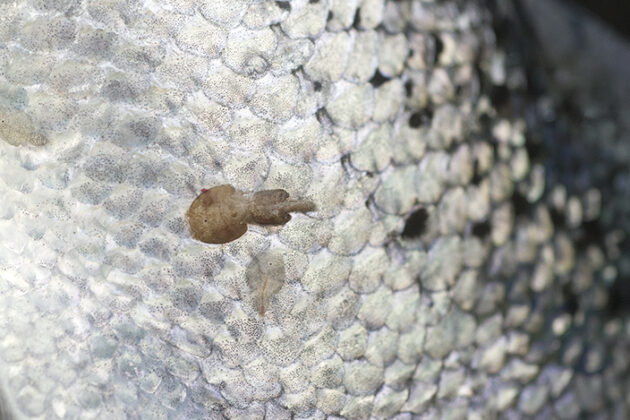Sea lice prevention is better than the cure

Sea lice management is a stressful task for salmon and salmon farmers. Methods to prevent sea louse infestations have some key advantages over other strategies, scientists argues.
In a new article titled Prevention not cure: a review of methods to avoid sea lice infestations in salmon aquaculture, researchers from the University of Melbourne, Norwegian Institute of Marine Research and Nofima argue that methods to prevent sea louse infestations have some key advantages over other strategies, and identify the most promising preventative methods.
Currently, farmers have options to manage lice by preventing infestations, continuously controlling infestations to keep lice at low levels, or waiting until infestations reach ‘trigger’ levels and then carrying out immediate delousing. The authors write that effectively preventing infestations before they occur causes less stress for the salmon and fewer production losses, as farmers avoid the need for delousing treatments.
“The major delousing methods subject the salmon and the lice to the same unpleasant experience – they work because the salmon usually survive the experience and the sea lice do not. Preventative methods avoid this situation by targeting lice before they attach to the host, or by helping salmon fight off lice larvae at the moment of attachment”, said lead author Dr Luke Barrett from the University of Melbourne.
What are the most effective methods to prevent sea louse infestations?
The researchers trawled through the data from all published tests of sea lice prevention and identified the most effective methods. They found that the best approach is to keep lice out of sea cages using mesh or tarpaulin barriers: lice skirts prevented 55% of infestations, while snorkel cages prevented 76%. These methods can make the job of controlling lice much more manageable, while fully enclosing cages is more difficult but can be up to 100% effective.
However, lice barriers are not suitable at all locations, for example where there are strong currents or low oxygen levels. In such cases, other more widespread preventative methods are worth trying, such as encouraging salmon to swim below the most common depth for sea lice, improving the immunity of salmon using breeding or functional feed additives, and using repellents or masking scents to stop lice being attracted to salmon.
“Most preventative methods leverage our knowledge of the natural behaviours and physiology of salmon and lice, such as their preferred swimming depths, to reduce the likelihood of salmon encountering lice and becoming infected”, said co-author Prof Tim Dempster from the University of Melbourne.

What does the future hold?
Farming companies, especially in Norway, are beginning to invest more heavily into preventative methods such as skirts and snorkel cages, as well as continuous control methods, to avoid having to delouse. The authors expect this trend to continue.
Crucially, susceptibility to sea lice is a genetic trait that is passed on to offspring. Accordingly, some researchers and farming companies have also made progress on breeding more lice-resistant salmon, while work on a cost-effective vaccine continues. “Selective breeding against sea lice is a long-term strategy that will likely bring significant benefits in the future.” said co-author Dr Nick Robinson, a senior researcher at Nofima.
The research was published this week at Reviews in Aquaculture. 
Different types of preventative methods and their measured effects on lice levels. Each dot is the outcome of a single study testing that method.
Publication
Contact person
Topics
Salmon lice
